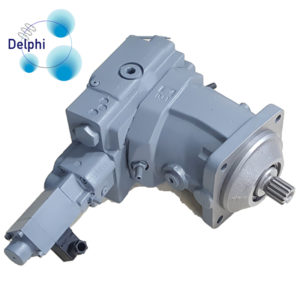Home » Posts tagged '4 pump hydraulic setup'
Tag Archives: 4 pump hydraulic setup
What are some common safety concerns when operating a 4 pump hydraulic setup?
Operating a 4 pump hydraulic setup can pose several safety concerns if proper precautions are not taken.
Here are some common safety concerns to be aware of:
High pressure: A 4 pump hydraulic setup is capable of generating very high pressures, which can pose a serious safety hazard if not properly controlled. It’s important to ensure that the system is properly designed and that pressure relief valves are installed to prevent pressure buildup.
Fluid leaks: Hydraulic fluid can be harmful if it comes into contact with skin or eyes, and it can also create slip hazards if it leaks onto the floor. Regular inspection and maintenance of the system can help prevent fluid leaks.
Electrical hazards: If the hydraulic system is powered by electricity, there is a risk of electrical shock if proper precautions are not taken. It’s important to ensure that all electrical components are properly grounded and that workers are trained in electrical safety.
Pinch points: The moving parts of a hydraulic system, such as cylinders and valves, can create pinch points that can cause serious injuries if body parts or clothing become trapped. Proper guarding and safety procedures should be in place to prevent these types of accidents.
Overloading: It’s important to ensure that the 4 pump hydraulic setup is not overloaded, as this can cause components to fail and create dangerous conditions. The system should be properly designed and rated for the load it will be handling.
Fire hazards: Hydraulic fluid is flammable and can create a fire hazard if it comes into contact with hot surfaces or sparks. It’s important to ensure that the system is properly maintained and that all components are in good working condition to prevent fires.
By following proper safety procedures and taking appropriate precautions, it is possible to operate a 4 pump hydraulic setup safely and effectively. It’s important to provide proper training to all workers who will be operating or working around the system to ensure that they understand the potential hazards and how to prevent accidents.
How can I ensure that the hydraulic system is not overloaded?
To ensure that a hydraulic system, including a 4 pump hydraulic setup, is not overloaded, it’s important to follow the manufacturer’s specifications and 4 pump hydraulic setup guidelines for the system’s maximum load capacity.
Here are some steps you can take to ensure that the system is not overloaded:
Determine the load requirements: Before operating the hydraulic system, you should determine the load requirements of the application you will be using it for. This will help you select the appropriate components, including pumps, valves, and cylinders, to ensure that the system can handle the load.
Check the system’s maximum load capacity: The manufacturer’s specifications for the hydraulic system will include the maximum load capacity for the system. It’s important to ensure that the load you will be handling does not exceed this capacity.
Monitor the system’s pressure: Monitoring the hydraulic system’s pressure can help you determine if it is being overloaded. If the pressure is consistently higher than the system’s maximum operating pressure, it may be overloaded.
Ensure proper maintenance: Proper maintenance of the hydraulic system is critical to ensuring that it operates safely and effectively. This includes regular inspection of all components, replacing worn or damaged parts, and repairing any leaks or other issues.
Provide proper training: Workers who will be operating the hydraulic system should receive proper training on how to use it safely and effectively. This includes understanding the maximum load capacity of the system and how to avoid overloading it.
By following these steps and ensuring that the hydraulic system is properly designed, maintained, and operated, you can help prevent overloading and ensure safe and effective operation of the system.
